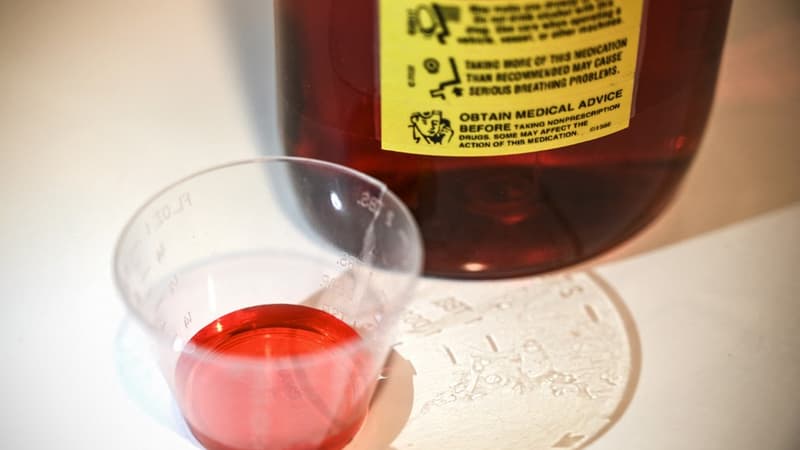A controversial opiate. Oxycodone is a very powerful pain reliever that is prescribed especially after an operation. Its use has been on the rise in recent years in France, despite serious side effects.
• An opioid similar to morphine
Oxycodone is a powerful analgesic whose effects are close to those produced by morphine, according to the Vidal Drug Dictionary. Registered on the list of psychotropics, it is consumed in capsules or intravenously.
In France, it has been marketed since 1998 under the name OxyContin or OxyNorm and is only prescribed by prescription. Initially, it is intended for patients suffering from severe pain, post-operative pain, or pain related to cancer.
It should only be prescribed as a second intention, that is, as a last resort when conventional analgesics no longer have an effect on the patient.
• A “worrying” progression
At the end of May, the French Pharmacological Society (SFPT) sounded the alarm and deplored the growing use of oxycodone in France.
“In recent years, its prescription in France has followed a worrying progression when it does not present any pharmacological advantage over morphine,” he says in a notice posted on his site.
New Aquitaine and Occitania are particularly concerned. There are thus 950 consumers per 100,000 inhabitants for the first region and 700 per 100,000 inhabitants for the second. The national average is 570 per 100,000 inhabitants.
• 23 deaths in France in 2019
And the consequences are worrisome. The implication of oxycodone in the number of toxic deaths from painkillers has thus multiplied by 4 between 2013 and 2017, according to the SFPT. In France, in 2019, 23 of these deaths were related to the use of oxycodone, according to the annual survey carried out by the DTA.
In fact, the SFPT believes that there would be a “greater pharmacological risk with oxycodone” compared to morphine. In particular, SFPT evokes a “more important and long-lasting dopaminergic action than morphine”, which could induce a stronger addiction, as well as a higher “risk of heart rhythm disorders”.
In case of overdose, the patient runs the risk of sedation, respiratory depression with the consequent risk of coma and death, according to the Vidal dictionary.
• More recipes?
Why this increase? For Dr. Maryse Lapeyre-Mestre, director of the Toulouse addiction surveillance center, some patients “are unaware of the danger of this drug” and practice self-medication.
“To reduce pain, they increase the doses without talking to your doctor”, even “consult (ent) several doctors on the same day to prescribe it”, she believes with France 3.
Francesco Salvo, professor of pharmacology at the Bordeaux University Hospital in the Gironde, put forward another hypothesis that directly involves doctors.
“We would like to see if there is a part of the population that receives longer prescriptions, which could suggest misuse, or even a use disorder,” he says, claiming to have issued a request for funding from the Regional Health Agency (ARS ). ) to better understand the phenomenon.
Would the laboratories encourage doctors to increase their prescriptions? The professor says that he does not have “evidence” to confirm this hypothesis, but considers “not to exclude it in view of what has happened with opioids in the history of medicine.”
• At the origin of the opioid crisis in the United States
In fact, the phenomenon has been observed on the other side of the Atlantic. In its opinion, the SFPT recalls from the outset that oxycodone is “the first drug that was at the center of the opioid crisis in the United States.”
This opioid crisis began in 1996, when several US pharmaceutical companies and distributors are accused of aggressively promoting various painkillers made from opioids, leading to overprescribing by doctors.
The use of the drug is also diverted. According to a confidential Justice Department report cited by the New York Times in 2018 pills are being stolen from pharmacies and some doctors are selling prescriptions for this drug. Consumers reduce them to a powder and then inhale them to increase the effect.
Oxycontin, produced by the Purdue Pharma laboratory owned by the Sackler family, was consumed by millions of Americans between 1995 and 2010. Some 600,000 people died from it in 20 years. The company has expanded internationally as Mundipharma and is taking over some of the controversial marketing methods used to sell painkillers.
However, in the face of criticism, Oxycontin prescriptions have decreased by 40% since 2010 in the United States. Targeted by more than 2,000 complaints, the company must now pay more than $6 billion in compensation to the families of overdose victims.
Source: BFM TV


